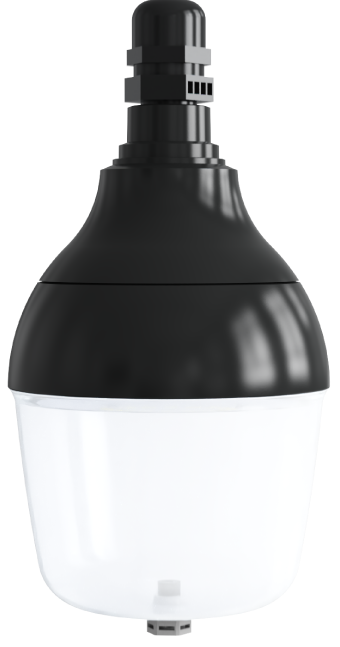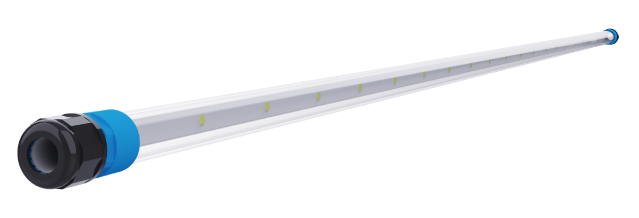Chicken Coop Light: Comparison of LED Lights and Energy-Saving Lights
Chicken Coop Light: Comparison of LED Lights and Energy-Saving Lights

Directory:
1. Experiment Setup
2. Lighting Performance
3. Cost-Efficiency
4. Impact on Hen Productivity
5. Additional Considerations
In poultry farming, lighting plays a pivotal role in the productivity and well-being of laying hens. To assess the effectiveness of different lighting options, a comparison experiment was conducted between LED lights and energy-saving lights in a laying hen house. This article summarizes the key findings of the experiment, focusing on the overall performance, cost-efficiency, and impact on hen productivity.
1. Experiment Setup
The experiment was carried out in a semi-open laying hen house, equipped with modern systems for automatic feeding, drinking, and manure removal. The chicken coop lighting system was designed with lights arranged in a staggered layout at a specified distance and height. The lights were divided into three sections: one with existing energy-saving lights and two with newly installed LED lights of different wattages. A single timing system controlled all lights to ensure consistency in light exposure.
2. Lighting Performance
The experiment revealed significant differences in lighting performance between LED lights and energy-saving lights. LED lights provided a broader range of light intensity and a more even distribution compared to energy-saving lights. This even distribution of light is crucial for creating a uniform environment within the hen house, which can positively influence hen behavior and productivity.
3. Cost-Efficiency
In terms of cost, LED lights emerged as a more cost-effective option. Despite having a higher initial purchase cost, LED lights offered lower operational costs due to their lower electricity consumption and longer lifespan. The annual electricity cost for LED lights was significantly less than that for energy-saving lights. Furthermore, considering the lifespan of each light type, the overall cost analysis showed that LED lights incurred the lowest annual cost per hen house.
4. Impact on Hen Productivity
The experiment aimed to evaluate the impact of different lighting conditions on hen productivity, including feed intake, egg production rate, and mortality rate. However, over the duration of the experiment, no significant differences were observed among the three groups of hens exposed to different lighting conditions. The overall incidence of pecking behavior and mortality rate also remained comparable. This suggests that both LED lights and energy-saving lights can meet the basic lighting requirements for optimal hen productivity.
5. Additional Considerations
LED lights offer several additional advantages compared to energy-saving lights. They generate minimal heat, which contributes to a more comfortable environment for the hens. The lower operating temperature of LED lights may also help in maintaining optimal conditions within the hen house. Furthermore, LED lights have a slower brightness decay and are easier to clean and maintain due to their smooth spherical shape and design.
The results of this experiment indicate that LED lights, particularly lower wattage options, are the most cost-effective and efficient choice for lighting in laying hen houses. They offer lower purchase and electricity costs while meeting the lighting requirements for optimal hen productivity. It is recommended to install LED chicken coop lights at a height of 2.4 to 2.6 meters above the ground, using multiple lights arranged in short distances and cross-rows to ensure an even distribution of light throughout the hen house.
6. Ceramiclite Chicken Coop Light



7. Related Solution & Science
8. Related Poultry Lighting Blog
Led Poultry House Lighting: Effect of Light on Broiler Production
Poultry Lighting Equipment Layout and Management
Broiler Lighting: Best Light for Chicken Brooder
Poultry House Lighting: Red/blue Light for Chicken Coop
Poultry Farm Lighting: Characteristics of Lighting for Poultry Farm
Led Chicken Lighting Benefit: Best Light for Chicken Coop
Application of LED Technology in Chicken Farm Lighting
9. People Also Ask
Why do You Put a Red Light in a Chicken Coop?
Red light is used in chicken coops primarily to enhance growth performance and reduce stress-related behaviors in broilers, based on evidence from poultry research...more
Can I Leave a Light on All Night for my Chickens
Leaving a light on all night in a chicken coop is not recommended for most scenarios, as it may disrupt natural biological rhythms and compromise poultry welfare...more
What is the Best Light to Put in a Chicken Coop
The best light to put in a chicken coop is LED lighting. LED lights are highly recommended due to their energy efficiency, long lifespan, and ability to provide stable and consistent lighting without flickering. They are also easy to adjust in terms of light intensity and timing, which can help reduce stress on the chickens. LED lights are particularly useful in modern chicken coops, especially in multi-tier systems, where proper lighting distribution is crucial to ensure uniform light coverage for all layers. Additionally, LED lights are environmentally friendly and do not produce excessive heat, making them ideal for maintaining a comfortable environment for the chickens. Compared to traditional lights like incandescent bulbs, which are inefficient and produce a lot of heat, or fluorescent lights, which have shorter lifespans, LED lights are a superior choice for chicken coops...more
_thumb.jpg)